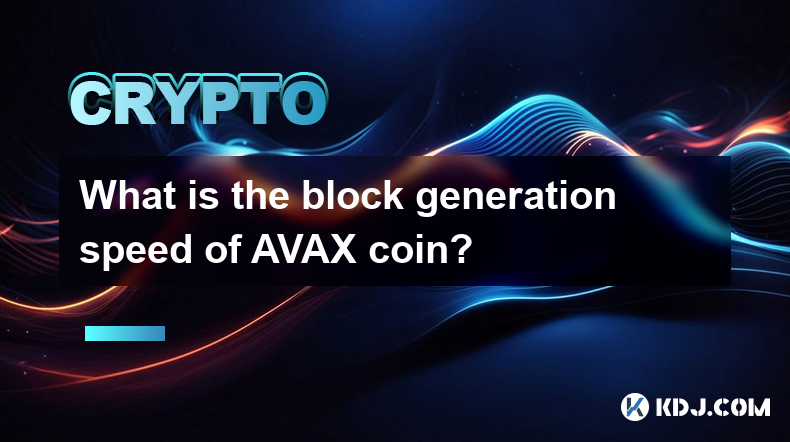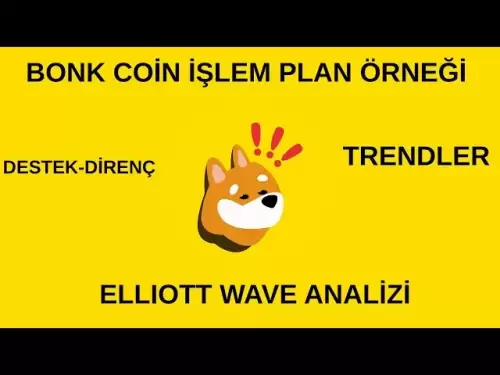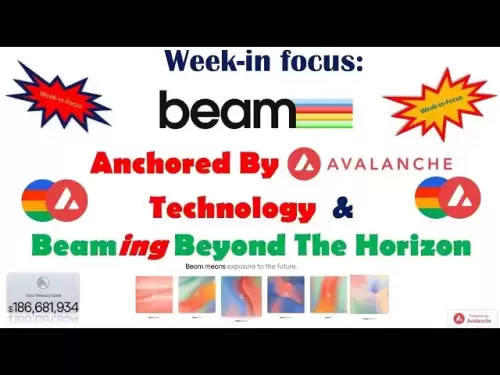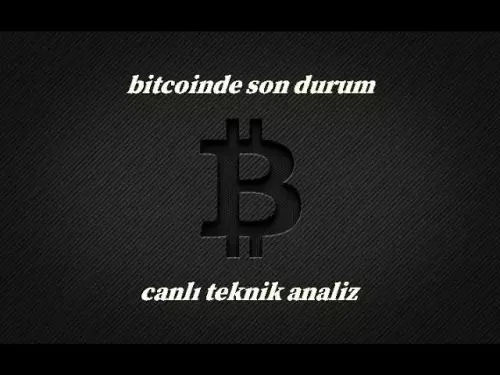-
 Bitcoin
Bitcoin $108,562.4295
0.46% -
 Ethereum
Ethereum $2,533.9553
1.52% -
 Tether USDt
Tether USDt $1.0002
-0.01% -
 XRP
XRP $2.2542
2.23% -
 BNB
BNB $662.4567
1.48% -
 Solana
Solana $151.4114
3.48% -
 USDC
USDC $0.9999
0.00% -
 TRON
TRON $0.2860
0.91% -
 Dogecoin
Dogecoin $0.1685
3.72% -
 Cardano
Cardano $0.5809
1.63% -
 Hyperliquid
Hyperliquid $39.2916
1.85% -
 Sui
Sui $2.8874
0.85% -
 Bitcoin Cash
Bitcoin Cash $496.5801
2.72% -
 Chainlink
Chainlink $13.3582
2.48% -
 UNUS SED LEO
UNUS SED LEO $9.0279
0.07% -
 Avalanche
Avalanche $18.0773
2.30% -
 Stellar
Stellar $0.2426
3.05% -
 Toncoin
Toncoin $2.9086
6.01% -
 Shiba Inu
Shiba Inu $0.0...01170
2.97% -
 Hedera
Hedera $0.1587
3.47% -
 Litecoin
Litecoin $87.4596
1.13% -
 Monero
Monero $317.0425
0.73% -
 Polkadot
Polkadot $3.3778
1.90% -
 Dai
Dai $0.9999
-0.01% -
 Ethena USDe
Ethena USDe $1.0001
-0.01% -
 Bitget Token
Bitget Token $4.4095
0.63% -
 Uniswap
Uniswap $7.3593
6.80% -
 Pepe
Pepe $0.0...09910
3.64% -
 Aave
Aave $274.7388
2.68% -
 Pi
Pi $0.4607
0.48%
What is the block generation speed of AVAX coin?
Avalanche's (AVAX) block generation speed, typically 1-3 seconds, is remarkably fast but variable, influenced by network congestion and subnet specifics. This speed enhances scalability and efficiency, though real-time monitoring is crucial for accurate assessment.
Mar 21, 2025 at 06:28 am

Key Points:
- Avalanche's block generation speed is significantly faster than many other prominent cryptocurrencies.
- The speed is influenced by several factors, including network congestion and the chosen subnet.
- Understanding this speed is crucial for developers building on the Avalanche platform and users interacting with it.
- While generally fast, variations in block time can occur.
- The speed contributes to Avalanche's scalability and efficiency.
What is the block generation speed of AVAX coin? Avalanche (AVAX) boasts a remarkably fast block generation time compared to many other blockchain networks. This speed is a key factor contributing to its scalability and overall efficiency. However, it's not a fixed number and varies depending on several factors. Understanding these factors is essential to grasping the true nature of Avalanche's transaction processing capabilities.
The primary factor influencing Avalanche's block generation speed is network congestion. During periods of high transaction volume, the network naturally slows down slightly as validators process more transactions concurrently. This is a common characteristic of all blockchain networks, not unique to Avalanche. The more transactions vying for processing, the longer the wait time becomes.
Another important consideration is the subnet. Avalanche utilizes a subnet architecture, allowing for the creation of specialized subnetworks for specific applications. Each subnet can have its own unique characteristics, including block generation speed. Some subnets may be configured for faster transaction processing than others, depending on their design and the applications they support.
While the average block time for Avalanche is often cited as being around 1-3 seconds, it's crucial to remember that this is an average. In reality, the actual block generation time can fluctuate, sometimes being slightly faster or slower depending on the aforementioned factors. Real-world observation and monitoring are necessary for accurate assessments of the speed in specific situations.
The speed of block generation is intrinsically linked to the consensus mechanism employed by Avalanche. Avalanche utilizes a novel consensus protocol called Avalanche consensus, designed for high throughput and low latency. This protocol allows for the rapid confirmation of transactions, contributing significantly to the network's speed. The efficiency of this consensus mechanism is a major factor in Avalanche's ability to achieve such fast block times.
Furthermore, the design of the Avalanche network itself plays a crucial role in its speed. The network's architecture is optimized for efficient transaction processing, minimizing bottlenecks and maximizing throughput. This architecture, combined with the Avalanche consensus mechanism, ensures that transactions are processed and confirmed quickly. This efficiency is a key differentiator for Avalanche in the competitive landscape of blockchain technologies.
The fast block generation speed of Avalanche has significant implications for developers. The ability to quickly confirm transactions allows for the creation of decentralized applications (dApps) with low latency and a responsive user experience. This makes Avalanche an attractive platform for developers seeking to build high-performance applications.
For users, the fast block times translate to quicker transaction confirmations. This means less waiting time for transactions to complete, improving the overall user experience and making Avalanche more convenient for everyday use. The speed is a significant advantage for those requiring rapid transaction processing.
The speed also impacts the security of the network, indirectly. While a faster block time doesn't inherently improve security, the quick confirmation of transactions makes it harder for malicious actors to manipulate the network. The rapid finality of transactions reduces the window of opportunity for attacks.
Understanding the variability in block generation times is key to realistic expectations. While the average is generally very fast, spikes in network activity can temporarily increase the time it takes for a block to be produced. Monitoring real-time data is crucial for accurate assessment.
The fast block generation speed of AVAX is a critical component of its overall design and functionality. It's a key factor in its appeal to both developers and users, contributing significantly to its potential as a scalable and efficient blockchain platform. The speed is not a static value and understanding the influencing factors provides a more complete picture of Avalanche's performance.
Frequently Asked Questions:
Q: Is the 1-3 second block time guaranteed?
A: No, the 1-3 second block time is an average. Actual block generation time fluctuates depending on network congestion and the specific subnet used.
Q: How does Avalanche's speed compare to other blockchains?
A: Avalanche's block generation speed is significantly faster than many other prominent blockchains like Bitcoin or Ethereum, which have considerably longer block times.
Q: Does a faster block time always mean better security?
A: Not necessarily. While faster block times can reduce the window for attacks, they don't inherently improve the underlying cryptographic security of the network.
Q: Can I predict the exact block generation time?
A: No, predicting the exact block generation time is not possible due to the dynamic nature of network activity and subnet variations. Real-time monitoring is the only way to know the current speed.
Q: What happens if the network gets extremely congested?
A: During periods of extreme network congestion, the block generation time will increase. While Avalanche is designed for high throughput, it is still susceptible to slowdown under exceptionally high transaction volumes.
Disclaimer:info@kdj.com
The information provided is not trading advice. kdj.com does not assume any responsibility for any investments made based on the information provided in this article. Cryptocurrencies are highly volatile and it is highly recommended that you invest with caution after thorough research!
If you believe that the content used on this website infringes your copyright, please contact us immediately (info@kdj.com) and we will delete it promptly.
- Altcoins in the Spotlight: What's Trending Now?
- 2025-07-07 02:45:12
- Pepe Coin's Plunge: Is the Frog Coin Ready to Bounce Back, or is Little Pepe the New Big Bet?
- 2025-07-07 02:47:22
- Sports Tokens: Market Cap Predictions for July 2025
- 2025-07-07 02:45:12
- DeFi, AI, and Crypto Resilience: Navigating the Future of Finance
- 2025-07-07 02:45:14
- Dogwifhat, Shiba Inu, and the Crypto Scene: What's Hot and What's Not?
- 2025-07-07 02:47:08
- Whales, Fartcoin, and Price Dips: What's the Deal?
- 2025-07-07 02:47:09
Related knowledge

How to customize USDT TRC20 mining fees? Flexible adjustment tutorial
Jun 13,2025 at 01:42am
Understanding USDT TRC20 Mining FeesMining fees on the TRON (TRC20) network are essential for processing transactions. Unlike Bitcoin or Ethereum, where miners directly validate transactions, TRON uses a delegated proof-of-stake (DPoS) mechanism. However, users still need to pay bandwidth and energy fees, which are collectively referred to as 'mining fe...

USDT TRC20 transaction is stuck? Solution summary
Jun 14,2025 at 11:15pm
Understanding USDT TRC20 TransactionsWhen users mention that a USDT TRC20 transaction is stuck, they typically refer to a situation where the transfer of Tether (USDT) on the TRON blockchain has not been confirmed for an extended period. This issue may arise due to various reasons such as network congestion, insufficient transaction fees, or wallet-rela...

How to cancel USDT TRC20 unconfirmed transactions? Operation guide
Jun 13,2025 at 11:01pm
Understanding USDT TRC20 Unconfirmed TransactionsWhen dealing with USDT TRC20 transactions, it’s crucial to understand what an unconfirmed transaction means. An unconfirmed transaction is one that has been broadcasted to the blockchain network but hasn’t yet been included in a block. This typically occurs due to low transaction fees or network congestio...

How to check USDT TRC20 balance? Introduction to multiple query methods
Jun 21,2025 at 02:42am
Understanding USDT TRC20 and Its ImportanceUSDT (Tether) is one of the most widely used stablecoins in the cryptocurrency market. It exists on multiple blockchain networks, including TRC20, which operates on the Tron (TRX) network. Checking your USDT TRC20 balance accurately is crucial for users who hold or transact with this asset. Whether you're sendi...

What to do if USDT TRC20 transfers are congested? Speed up trading skills
Jun 13,2025 at 09:56am
Understanding USDT TRC20 Transfer CongestionWhen transferring USDT TRC20, users may occasionally experience delays or congestion. This typically occurs due to network overload on the TRON blockchain, which hosts the TRC20 version of Tether. Unlike the ERC20 variant (which runs on Ethereum), TRC20 transactions are generally faster and cheaper, but during...

The relationship between USDT TRC20 and TRON chain: technical background analysis
Jun 12,2025 at 01:28pm
What is USDT TRC20?USDT TRC20 refers to the Tether (USDT) token issued on the TRON blockchain using the TRC-20 standard. Unlike the more commonly known ERC-20 version of USDT (which runs on Ethereum), the TRC-20 variant leverages the TRON network's infrastructure for faster and cheaper transactions. The emergence of this version came as part of Tether’s...

How to customize USDT TRC20 mining fees? Flexible adjustment tutorial
Jun 13,2025 at 01:42am
Understanding USDT TRC20 Mining FeesMining fees on the TRON (TRC20) network are essential for processing transactions. Unlike Bitcoin or Ethereum, where miners directly validate transactions, TRON uses a delegated proof-of-stake (DPoS) mechanism. However, users still need to pay bandwidth and energy fees, which are collectively referred to as 'mining fe...

USDT TRC20 transaction is stuck? Solution summary
Jun 14,2025 at 11:15pm
Understanding USDT TRC20 TransactionsWhen users mention that a USDT TRC20 transaction is stuck, they typically refer to a situation where the transfer of Tether (USDT) on the TRON blockchain has not been confirmed for an extended period. This issue may arise due to various reasons such as network congestion, insufficient transaction fees, or wallet-rela...

How to cancel USDT TRC20 unconfirmed transactions? Operation guide
Jun 13,2025 at 11:01pm
Understanding USDT TRC20 Unconfirmed TransactionsWhen dealing with USDT TRC20 transactions, it’s crucial to understand what an unconfirmed transaction means. An unconfirmed transaction is one that has been broadcasted to the blockchain network but hasn’t yet been included in a block. This typically occurs due to low transaction fees or network congestio...

How to check USDT TRC20 balance? Introduction to multiple query methods
Jun 21,2025 at 02:42am
Understanding USDT TRC20 and Its ImportanceUSDT (Tether) is one of the most widely used stablecoins in the cryptocurrency market. It exists on multiple blockchain networks, including TRC20, which operates on the Tron (TRX) network. Checking your USDT TRC20 balance accurately is crucial for users who hold or transact with this asset. Whether you're sendi...

What to do if USDT TRC20 transfers are congested? Speed up trading skills
Jun 13,2025 at 09:56am
Understanding USDT TRC20 Transfer CongestionWhen transferring USDT TRC20, users may occasionally experience delays or congestion. This typically occurs due to network overload on the TRON blockchain, which hosts the TRC20 version of Tether. Unlike the ERC20 variant (which runs on Ethereum), TRC20 transactions are generally faster and cheaper, but during...

The relationship between USDT TRC20 and TRON chain: technical background analysis
Jun 12,2025 at 01:28pm
What is USDT TRC20?USDT TRC20 refers to the Tether (USDT) token issued on the TRON blockchain using the TRC-20 standard. Unlike the more commonly known ERC-20 version of USDT (which runs on Ethereum), the TRC-20 variant leverages the TRON network's infrastructure for faster and cheaper transactions. The emergence of this version came as part of Tether’s...
See all articles

























































































